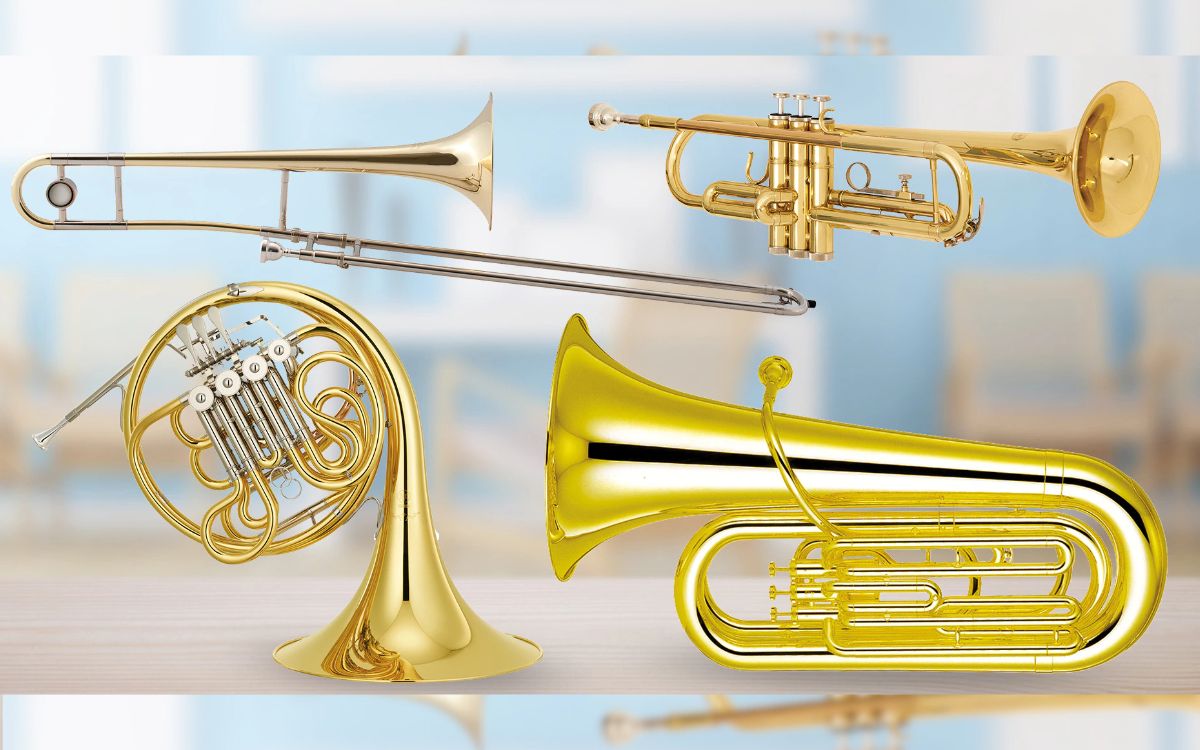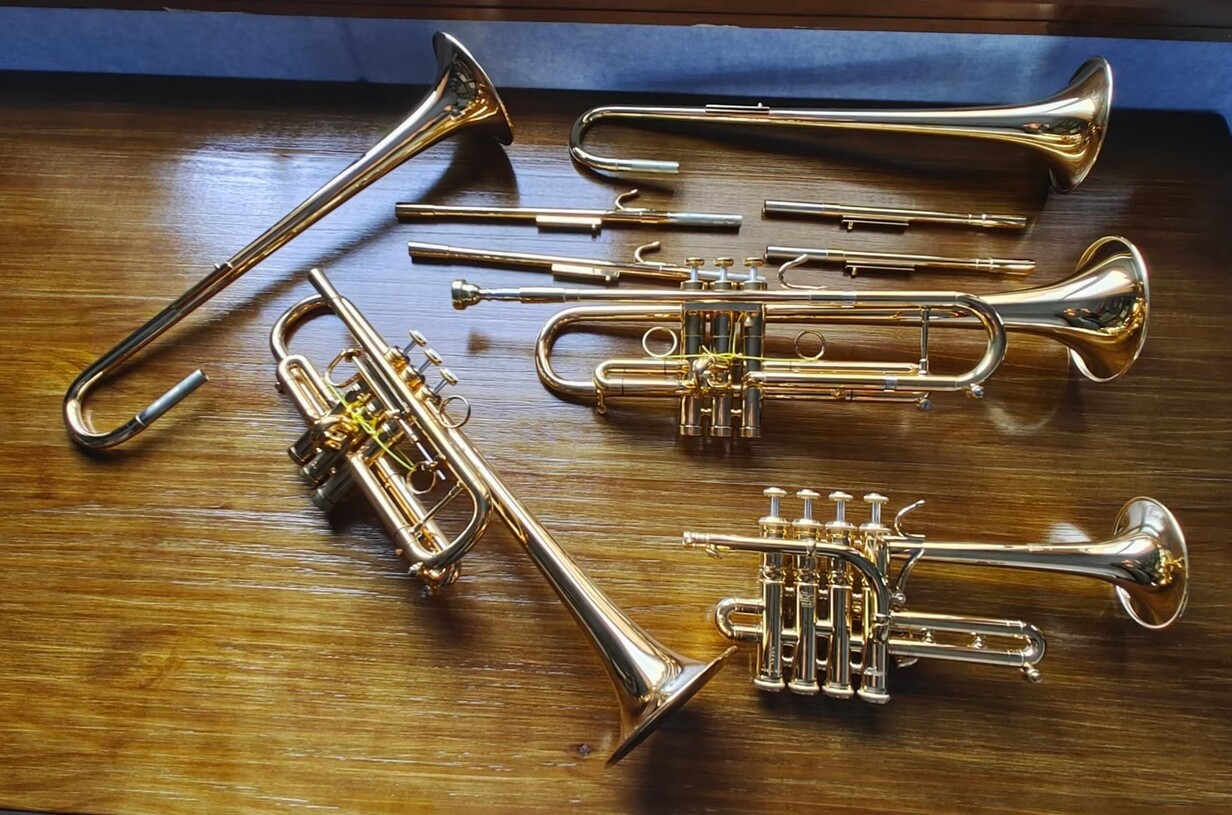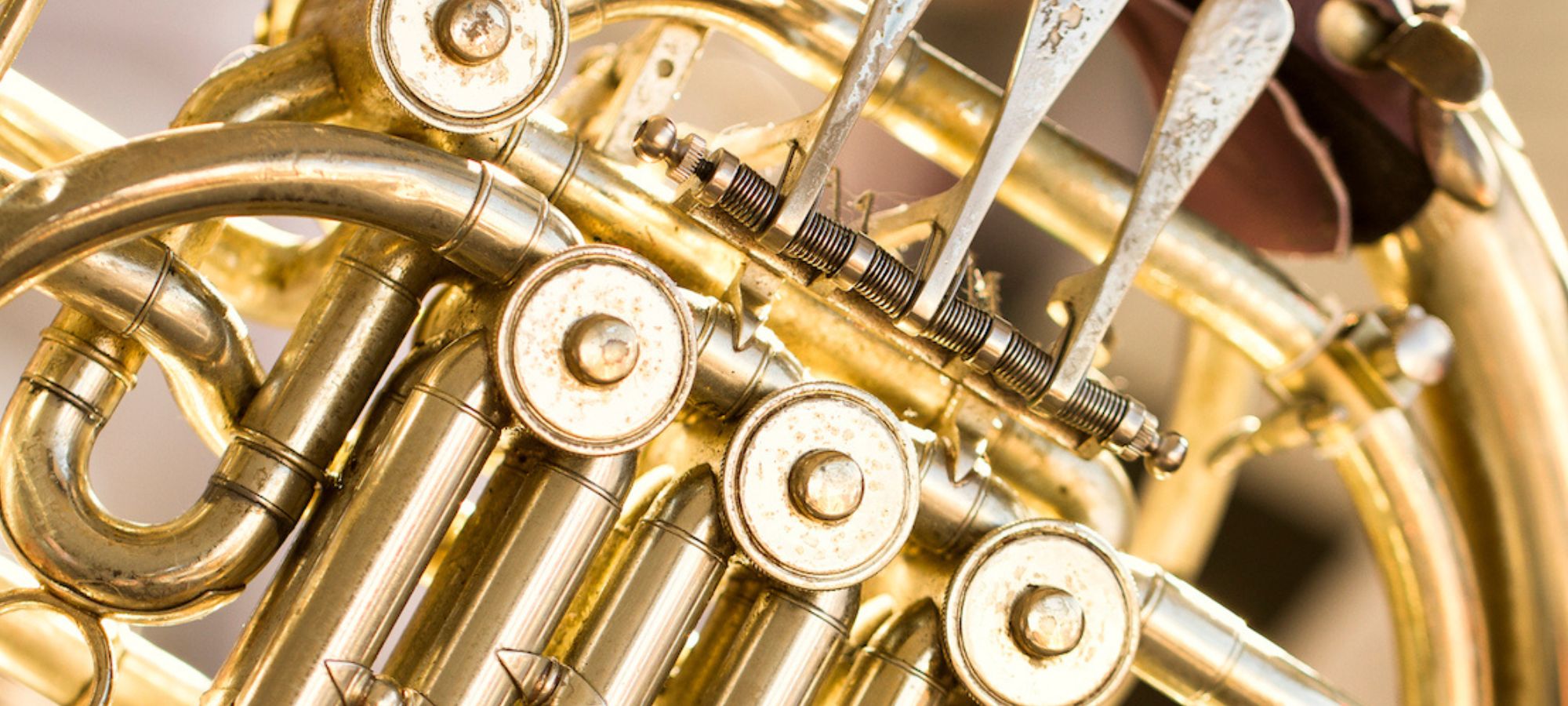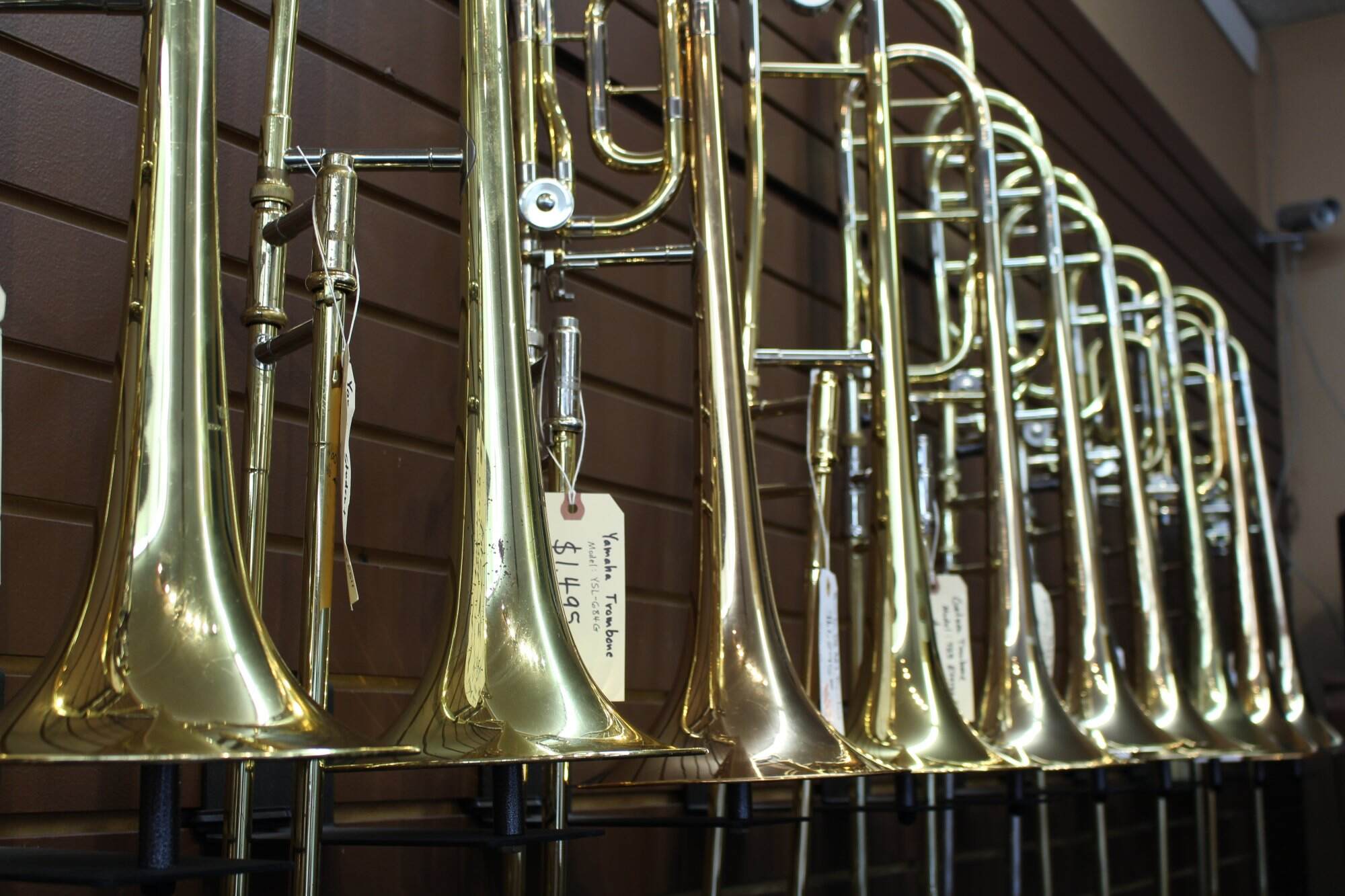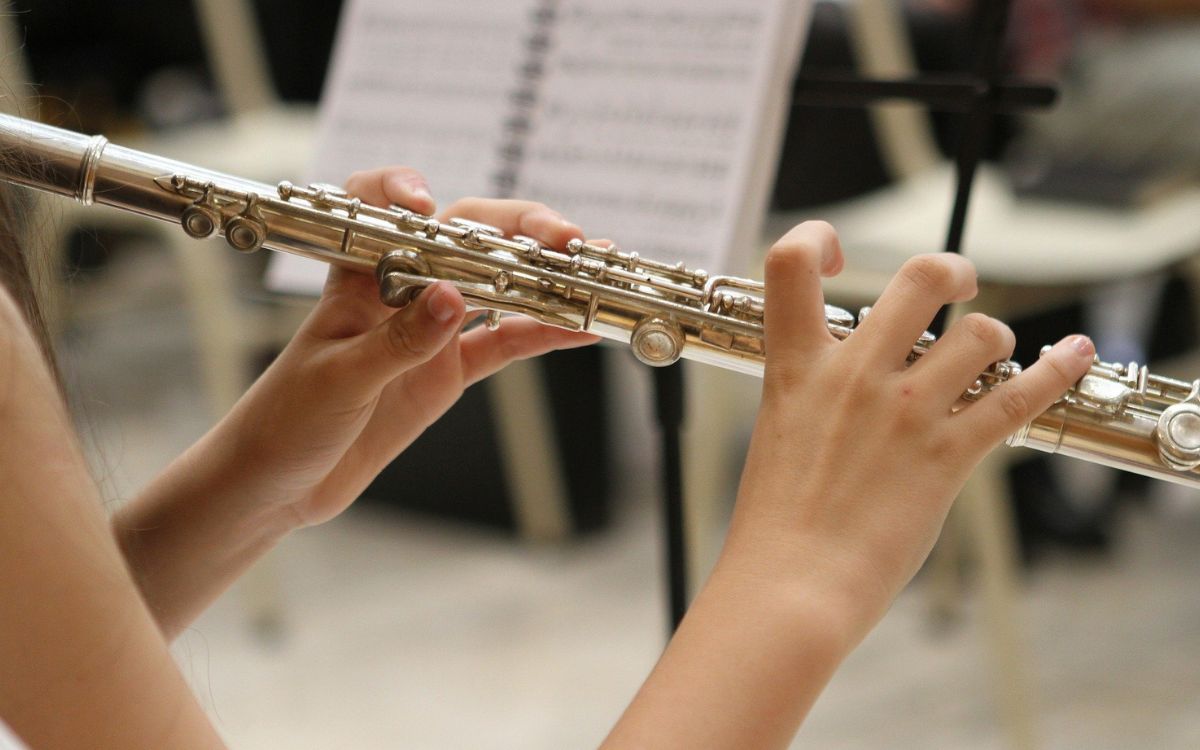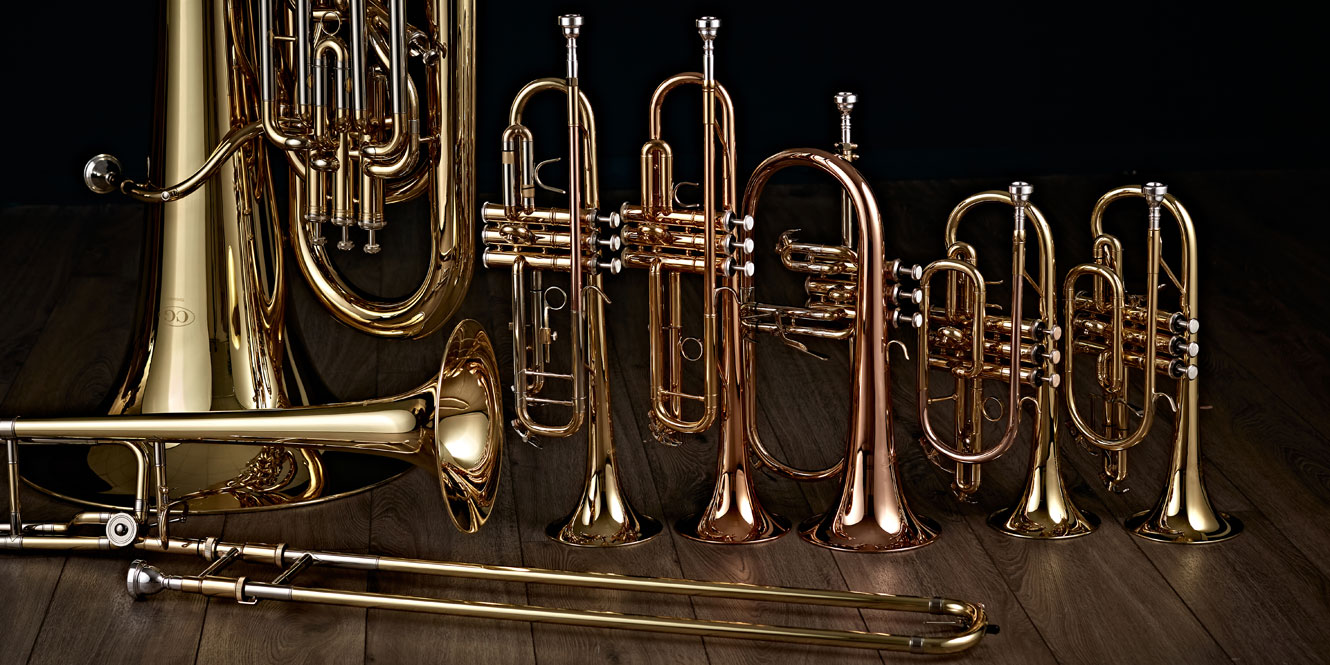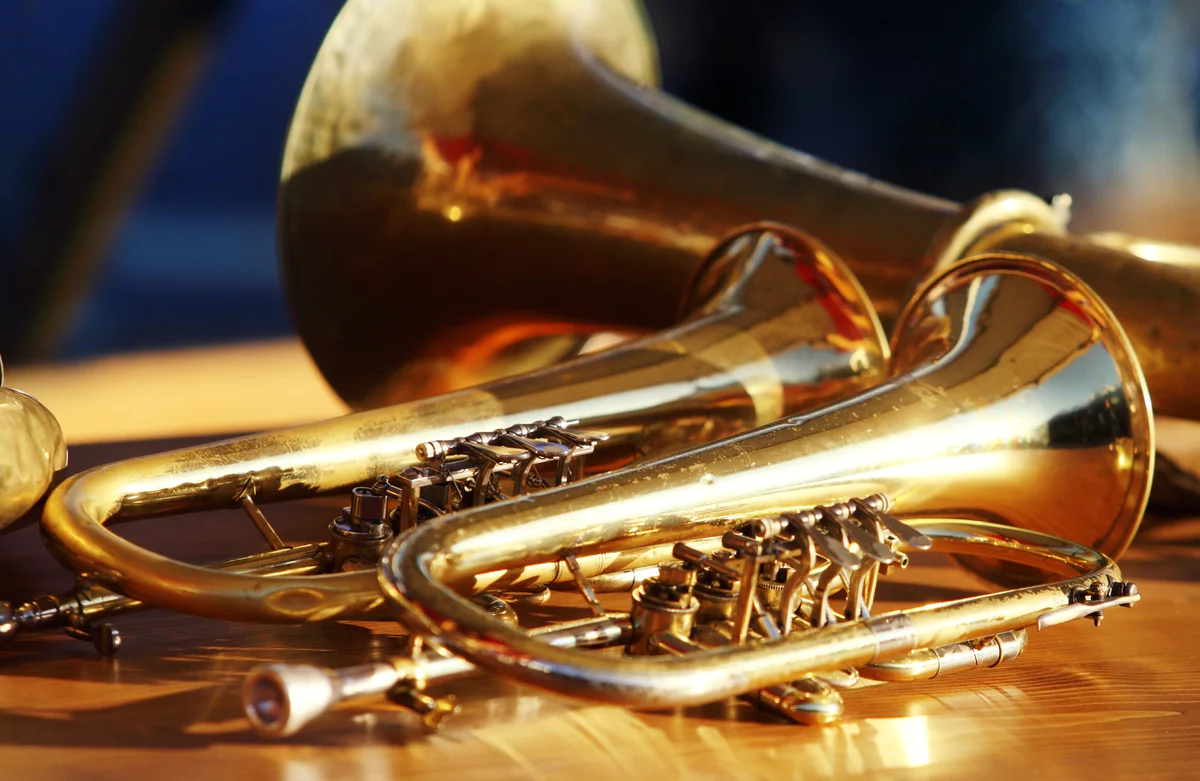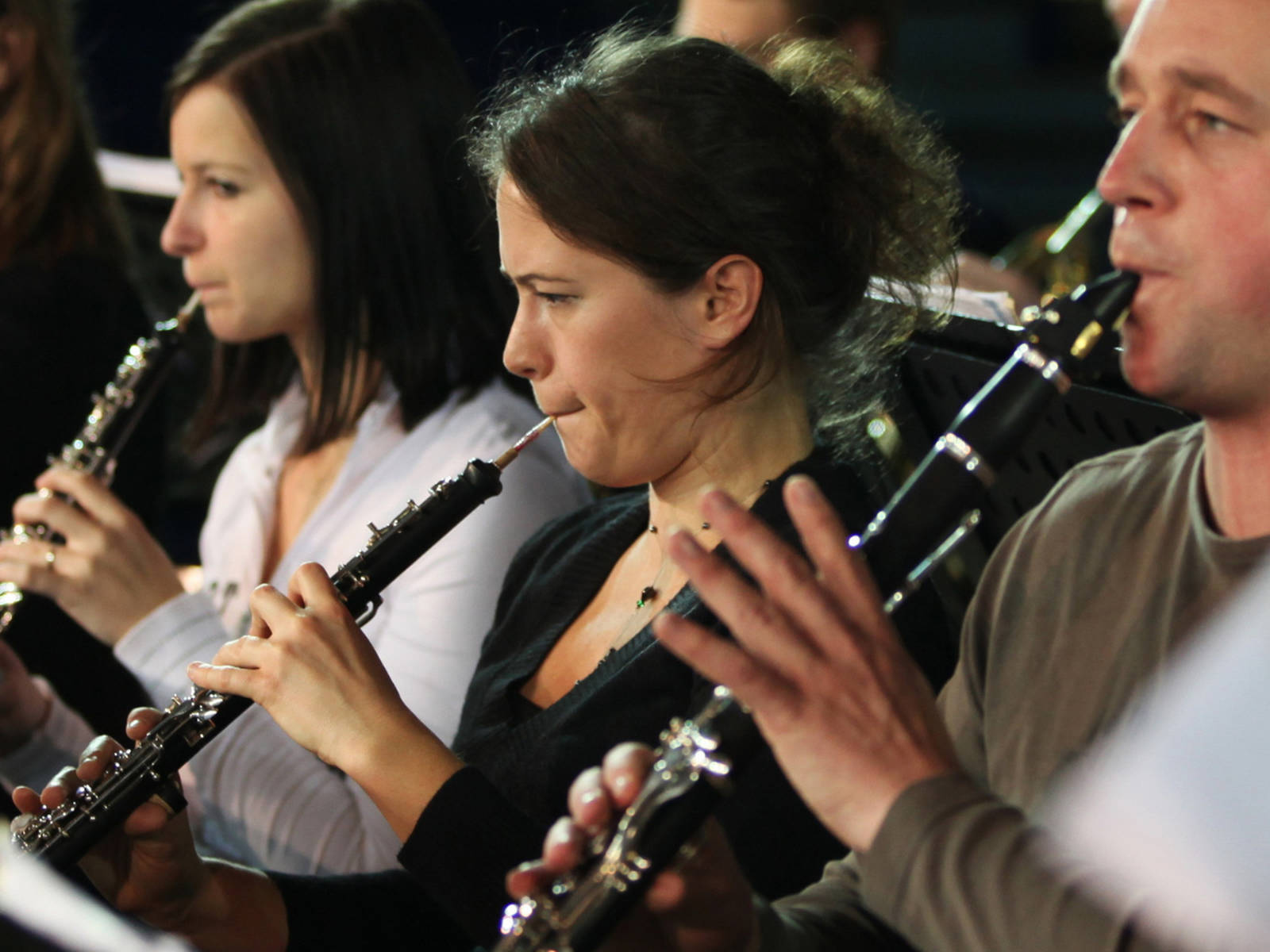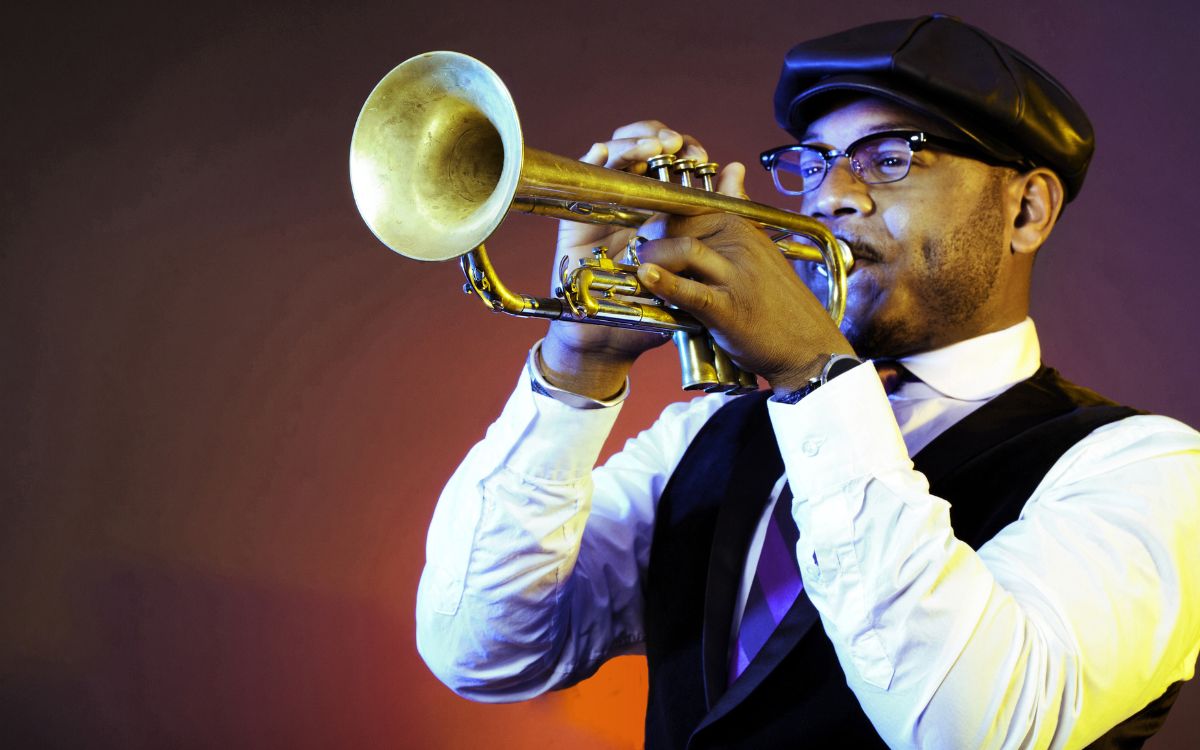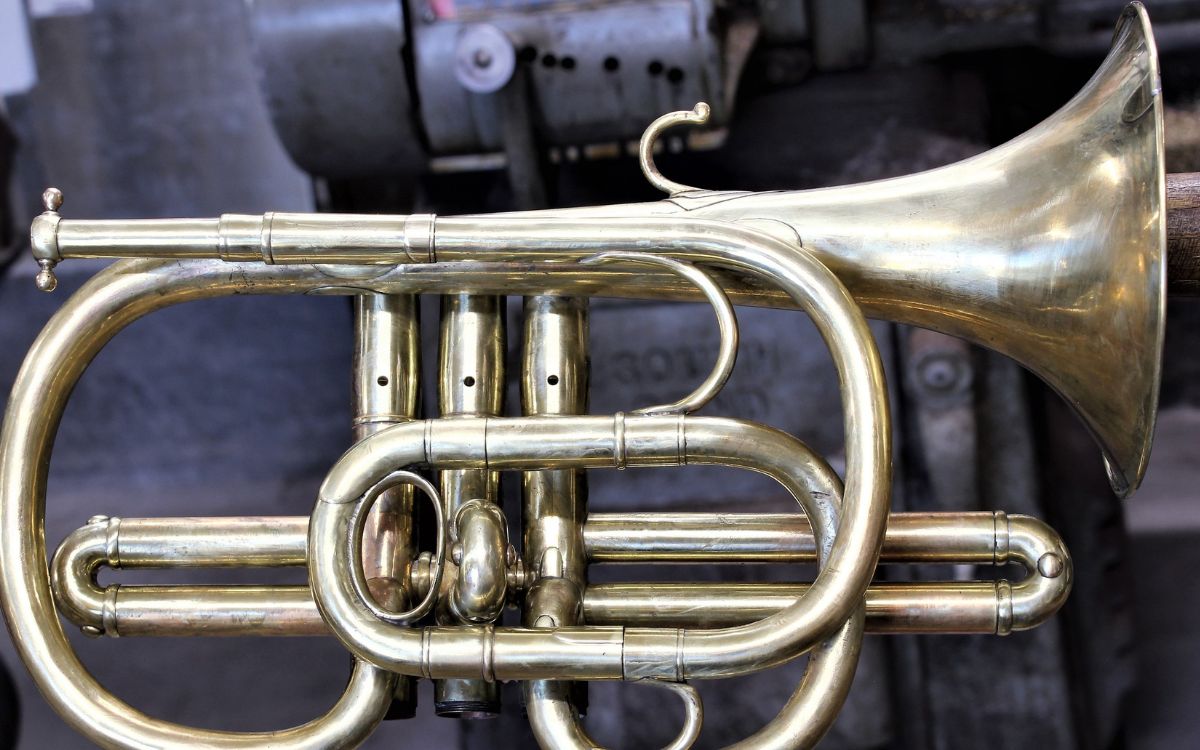Home>Instruments>Brass Instruments>How Are Brass Instruments Tuned


Brass Instruments
How Are Brass Instruments Tuned
Published: January 15, 2024
Learn how brass instruments are tuned and discover the secrets behind achieving perfect pitch. Explore the intricate process of tuning brass instruments and unlock the harmonious world of brass music.
(Many of the links in this article redirect to a specific reviewed product. Your purchase of these products through affiliate links helps to generate commission for AudioLover.com, at no extra cost. Learn more)
Table of Contents
Introduction
Brass instruments have been a cornerstone of the musical world for centuries, known for their rich and vibrant tones. Whether it’s the soaring melodies of a trumpet, the warm and mellow sound of a trombone, or the commanding presence of a tuba, these instruments have captivated audiences and musicians alike.
However, what many people may not realize is that behind the mesmerizing melodies lies the intricate process of tuning. Tuning plays a crucial role in ensuring that brass instruments produce the correct pitch and harmonize with other instruments in an ensemble or orchestra. It is through precise tuning that musicians can achieve the desired musical expression and create a unified sound.
In this article, we will delve into the fascinating world of tuning brass instruments. We will explore the basic principles of tuning, the mechanisms involved, and the techniques musicians use to achieve optimal pitch. Whether you are a brass player looking to fine-tune your skills or simply curious about the inner workings of these beautiful instruments, this article aims to provide insight and understanding into the art of tuning brass instruments.
So, let’s embark on this musical journey and discover the secrets behind the harmonious sounds of brass instruments!
The Basics of Tuning Brass Instruments
Tuning brass instruments involves adjusting the length of the instrument to produce the correct pitch. Brass instruments are essentially long tubes that generate sound through the vibrations of the player’s lips on the mouthpiece. By altering the length of the instrument, either through valve combinations or slide positions, the player can change the pitch of the notes produced.
The fundamental pitch of a brass instrument, often referred to as the “open” or “natural” pitch, is achieved by playing the instrument without any valve or slide adjustments. This open pitch is usually in the instrument’s key, such as B♭ for trumpets or F for French horns. From this open pitch, players can then manipulate the instrument to produce a wide range of notes and achieve the desired tuning.
The primary factors that affect the pitch and tuning of brass instruments are the valve combinations and the slide positions.
Valve Combinations: Most brass instruments, such as trumpets and euphoniums, are equipped with valves. These valves are cylindrical tubes that, when pressed down, redirect the airflow through additional sections of tubing. Each valve combination changes the length of the instrument, resulting in a different pitch. By mastering the fingerings and combinations of the valves, players can produce a wide range of notes and achieve accurate tuning.
Slide Positions: Instruments like trombones and certain types of tubas utilize sliding tubes instead of valves. The player adjusts the position of these slides to alter the length of the instrument and, consequently, the pitch. This allows for continuous and precise pitch control, making slide instruments particularly versatile and expressive.
It’s important to note that tuning brass instruments is not solely dependent on the valves or slides; it also relies on the musician’s embouchure and ear. The embouchure refers to the way the player shapes their lips, facial muscles, and tongue to produce sound. By fine-tuning their embouchure and developing a keen ear for pitch, musicians can make subtle adjustments to achieve precise tuning.
Now that we have explored the basic principles of tuning brass instruments, we can delve into the specific mechanisms involved in the tuning process. In the next section, we will discuss the role of valves and tuning slides in brass instrument tuning.
The Role of Valves in Tuning
Valves play a crucial role in the tuning process of brass instruments. They allow the player to alter the length of the tubing and, therefore, the pitch of the instrument. By understanding how valves work and how to use them effectively, brass musicians can achieve accurate tuning and seamless transitions between different notes.
Brass instruments typically have three or four valves, although there are exceptions like the trumpet and flugelhorn, which have three. Each valve adds a specific length of tubing to the instrument, effectively lowering the pitch by a certain interval. By combining valve combinations, players can access a wide range of pitches and achieve the desired tuning for a particular piece of music.
When a valve is not engaged, the air flows through the main tubing of the instrument. However, when a valve is activated, it diverts the air into an additional length of tubing. This increases the overall length of the instrument and lowers the pitch accordingly. The length of the additional tubing is precisely calculated to correspond to the desired pitch alteration.
Valve combinations can become quite intricate, especially in larger brass instruments such as tubas and euphoniums. Musicians must memorize specific fingerings for each note and transition smoothly between different valve combinations to achieve seamless playing and accurate tuning.
One common occurrence in brass instrument playing is the use of alternate fingerings or valve slides to further refine the tuning. Due to the nature of how brass instruments and valves work, some notes may naturally be slightly out of tune. Using alternate fingerings or adjustments to the valve slides, players can fine-tune individual notes to ensure proper intonation.
It is worth mentioning that the valve system requires regular maintenance to ensure optimal performance. Regularly cleaning and lubricating the valves, as well as checking for any leaks or malfunctions, is essential for maintaining accurate tuning and overall instrument functionality. Proper care and attention to the valves will ensure that the instrument responds well to the player’s actions and allows for precise tuning.
Now that we have discussed the role of valves in brass instrument tuning, let’s explore another important component in achieving accurate pitch: the tuning slides.
Tuning Slides: A Key Component
In addition to valves, tuning slides are a vital component in achieving accurate tuning in brass instruments. These movable sections of tubing allow players to make minute adjustments to the overall length of the instrument, fine-tuning the pitch and ensuring harmonious playing.
Brass instruments that utilize tuning slides include trombones, some types of tubas, and certain types of horns. The main tuning slide, also known as the tuning crook, is located near the mouthpiece and affects the overall pitch of the instrument. By adjusting the position of the main tuning slide in or out, players can raise or lower the pitch, respectively.
The tuning slide works by varying the length of the vibrating air column within the instrument. Extending the slide lengthens the total tubing length, lowering the pitch, while retracting the slide shortens the length, raising the pitch. This allows for precise adjustments to compensate for variations in temperature, humidity, or even the characteristics of different musical compositions.
In addition to the main tuning slide, brass instruments may also feature other slides that contribute to specific pitch adjustments. For example, a trombone has a slide that controls the length of the seven positions available to produce different notes. By moving these slides in or out, the trombonist can make micro-adjustments to the pitch and achieve accurate tuning for each note.
It is important to note that tuning slides, like valves, require regular maintenance and lubrication to function properly. Keeping the slides clean and well-maintained ensures smooth movement and accurate pitch adjustments. Additionally, players must be mindful of not forcing the slides or allowing them to become stuck, as this can hinder the ability to tune the instrument effectively.
Proper use of tuning slides requires a keen ear and a thorough understanding of the instrument’s tendencies. Over time, musicians develop a sense of intuition and familiarity with their brass instrument’s specific characteristics, allowing them to make quick and precise adjustments to achieve optimal tuning.
By combining the use of valves and tuning slides, brass musicians have a wide range of tools at their disposal to achieve accurate pitch and create a harmonious sound. In the next section, we will explore the role of mouthpieces in tuning brass instruments.
The Use of Mouthpieces in Tuning
Mouthpieces play a significant role in the tuning process of brass instruments. They are not merely a means of producing sound; they also affect the pitch, tone, and overall playability of the instrument. Understanding the nuances of mouthpiece design and how it relates to tuning is essential for brass musicians seeking optimal performance.
The shape, size, and depth of a mouthpiece impact the response and resonance of the instrument. Different styles of mouthpieces are available, each with its unique characteristics that can affect tuning. For example, a shallower mouthpiece may produce a brighter and more focused sound, while a deeper mouthpiece can result in a darker and more robust tone.
When it comes to tuning, the position of the player’s lips on the mouthpiece plays a crucial role. The embouchure, which refers to how the player forms their lips and directs air into the instrument, can affect pitch and intonation. Proper control and placement of the embouchure can help in achieving accurate tuning.
Brass players can make subtle adjustments to their embouchure to find the optimal position for each note. This involves a combination of lip tension, air support, and mouthpiece placement. By experimenting with these factors, musicians can fine-tune the pitch of individual notes and ensure they are in harmony with the ensemble.
It is worth noting that different mouthpiece designs may require adjustments to the player’s embouchure and playing style. Switching to a new mouthpiece may initially result in slight changes in pitch and intonation. However, with practice and adaptation, brass players can become accustomed to the new mouthpiece and achieve consistent tuning.
In addition to the technical aspects of mouthpiece design and embouchure, the physical condition of the mouthpiece also plays a role in tuning. Ensuring that the mouthpiece is clean and free from debris allows for consistent and reliable performance. Regular cleaning and maintenance, including routine brushing and sanitizing, contribute to the longevity and optimal functioning of the mouthpiece.
Finally, it is important to note that while mouthpieces play a significant role in the tuning process, they are just one component of the overall equation. The combination of proper embouchure technique, valve or slide adjustments, and careful attention to pitch can collectively contribute to accurate tuning.
Understanding the intricacies of mouthpieces and how they interact with tuning is a valuable skill for brass players. By honing their embouchure technique and selecting a mouthpiece that suits their playing style, musicians can achieve optimal tuning, enhance the instrument’s tonal qualities, and fully express themselves musically.
Now that we have explored the role of mouthpieces in tuning, let’s move on to discuss various techniques utilized by brass musicians to achieve accurate tuning.
Techniques for Tuning Brass Instruments
When it comes to tuning brass instruments, musicians employ several techniques to ensure accurate pitch and harmonious playing. These techniques involve a combination of ear training, physical adjustments, and careful attention to detail. Let’s explore some of the common techniques utilized by brass musicians:
Tuning with a Reference: One of the most common techniques is tuning to a reference pitch. Brass players often use a tuning fork, a piano, or a digital tuner to establish a reference note. By comparing the pitch produced by their instrument to the reference, musicians can make necessary adjustments to achieve accurate tuning.
Using Harmonic Series: Brass instruments generate a series of harmonics, or overtones, when played. By focusing on specific harmonics, musicians can adjust the pitch of their instrument. For instance, if a note is consistently sharp, the player may adjust their embouchure or valve/slide position to bring the lower harmonics into alignment.
Utilizing Lipping: Lipping refers to the technique of subtly altering the embouchure to slightly adjust the pitch. By slightly tightening or loosening the lips, players can manipulate the pitch up or down. This technique is especially useful for making minor pitch adjustments to individual notes.
Using Slide/Valve Position: Brass instruments with slides or valves offer flexibility in pitch adjustments. By moving the slide or adjusting the valve position, musicians can fine-tune the pitch of individual notes or entire passages. This technique requires a keen ear and an understanding of the instrument’s tendencies and tendencies of each note.
Listening and Blending: Tuning is not solely an individual endeavor. It’s crucial for brass musicians to actively listen to other members of the ensemble or orchestra and blend their sound. This involves adjusting pitch and tone to match the overall sound of the group, creating a unified and harmonious performance.
Tuning in Different Registers: Brass instruments may have variations in pitch and intonation across different registers. Musicians must be aware of these discrepancies and make necessary adjustments when transitioning between registers. This may involve altering embouchure, slide/valve positions, or lipping techniques.
Regardless of the specific technique used, achieving accurate tuning requires patience, practice, and a well-honed ear. Tuning is an ongoing process that evolves as musicians become more attuned to their instruments and their musical surroundings. It’s a skill that is continually developed and refined throughout a musician’s journey.
Now that we have explored various techniques for tuning brass instruments, let’s discuss some common challenges that brass players may encounter in the tuning process.
Common Challenges in Tuning Brass Instruments
Tuning brass instruments can present several challenges for musicians. These challenges arise from various factors, including instrument design, playing technique, and external conditions. Understanding these challenges is essential for brass players seeking to overcome them and achieve optimal tuning. Let’s explore some of the common challenges faced in tuning brass instruments:
Temperature and Humidity: Brass instruments are highly sensitive to changes in temperature and humidity. Fluctuations in these environmental conditions can cause the instrument to expand or contract, leading to pitch variations. It’s important for musicians to be aware of these changes and make appropriate adjustments during performances or practice sessions.
Instrument Wear and Tear: Brass instruments experience wear and tear over time, which can affect tuning. Valves may become sluggish or leaky, slides may become stuck, and overall instrument condition can deteriorate. Regular maintenance, including cleaning, lubrication, and periodic servicing, is crucial for maintaining accurate tuning.
Embouchure Consistency: Brass players rely on consistent embouchure technique to achieve accurate tuning. However, factors like fatigue, changes in facial muscles, and lack of endurance can impact the ability to maintain a consistent embouchure. Musicians must develop strength, flexibility, and endurance in their embouchure muscles to overcome these challenges and maintain stable pitch.
Intonation in Different Registers: Brass instruments often exhibit intonation discrepancies across different registers. Notes may play flat or sharp depending on the register being played. Musicians must be aware of these tendencies and adjust their embouchure, slide positions, and playing technique accordingly to achieve consistent pitch throughout the instrument’s range.
Ensemble Tuning: Tuning as an ensemble can be a complex task. Different brass instruments have unique timbres and tuning idiosyncrasies that must be carefully balanced within the ensemble. Brass players must actively listen to each other, adjust their pitch and tone, and blend their sound to create a harmonious and in-tune performance. This requires communication, rehearsal, and a keen ear for intonation.
Pitch Drift: Brass instruments may experience pitch drift during a performance due to factors like changes in breath support or embouchure pressure. Players must constantly monitor and adjust their pitch in real-time to ensure accurate tuning throughout a piece of music.
Adapting to Different Musical Styles: Different musical styles may require variations in tuning. For example, orchestral playing often calls for a slightly lower pitch, while brass band or marching band performances may require a higher pitch to project over a larger ensemble. Brass musicians must be adaptable and comfortable adjusting their tuning to suit the specific musical style and context.
Overcoming these common challenges in tuning requires a combination of technical skill, knowledge of the instrument, and experience. Brass musicians must develop a keen ear, precise playing technique, and an understanding of their individual instrument’s tendencies to consistently achieve accurate tuning.
Now that we have explored the common challenges in tuning brass instruments, let’s discuss some tips for maintaining proper tuning.
Tips for Maintaining Proper Tuning
Maintaining proper tuning in brass instruments is essential for achieving accurate pitch and creating a harmonious ensemble sound. Here are some valuable tips to help brass players maintain proper tuning:
Regular Instrument Maintenance: Keep your instrument in optimal condition by regularly cleaning and lubricating the valves, slides, and other movable parts. Check for any leaks or malfunctioning components and address them promptly. Proper maintenance ensures that your instrument responds well to adjustments and maintains accurate tuning.
Tune with Consistent Reference: Use a consistent reference pitch, such as a tuning fork, electronic tuner, or a piano, while practicing and performing. This allows you to develop a sense of pitch and helps train your ear to recognize accurate tuning. Consistently tuning with the same reference pitch creates a foundation for maintaining proper tuning in different musical contexts.
Develop a Stable Embouchure: Work on developing a stable and consistent embouchure technique. This involves finding the right balance of lip tension, air support, and mouthpiece pressure. A stable embouchure helps produce a centered and accurate sound, contributing to improved tuning. Regular practice and focus on embouchure development are key to maintaining proper tuning.
Focus on Breath Control: Develop control over your breath support to maintain steady airflow and control the pitch. Proper breath control allows for better intonation and minimizes pitch variability. Practice breathing exercises and techniques to strengthen your breath support and improve your ability to control pitch and maintain proper tuning.
Play with a Tuning Drone: Use a tuning drone or a drone app to practice playing in tune. Playing along with a drone helps train your ear to hear the correct pitch and develop intonation accuracy. Adjust your pitch to match the drone tone and work on blending your sound with the sustained pitch. This is particularly useful for brass players who frequently perform in ensembles.
Listen and Blend: Actively listen to the other musicians in your ensemble and aim to blend your sound with theirs. Pay attention to the characteristics of their instruments and adjust your pitch to match the group’s overall sound. Developing a keen ear and sensitivity to intonation will contribute to better tuning and a cohesive ensemble performance.
Practice Different Articulation Styles: Experiment with different articulation styles and phrase lengths to improve your control over pitch. Playing with varied articulations can enhance your ability to adjust pitch quickly and accurately. Practice staccato, legato, and sustained notes with precision to develop control over your pitch and maintain proper tuning.
Record and Evaluate: Record your practice sessions and performances to objectively evaluate your tuning. Listen back to identify areas that need improvement and make necessary adjustments to refine your pitch accuracy. Recording yourself provides valuable feedback and helps you track your progress in maintaining proper tuning.
By following these tips and incorporating them into your practice routine, you can improve your ability to maintain proper tuning in your brass playing. Remember that maintaining accurate pitch is a continuous process that requires focus, discipline, and a commitment to ongoing improvement.
With diligent practice and attention to detail, you can ensure that your brass instrument consistently produces the desired pitch, creating a harmonious and balanced musical experience for both yourself and your audience.
Now, let’s conclude our exploration of tuning brass instruments and reflect on the significance of this fundamental aspect of brass playing.
Conclusion
Tuning brass instruments is a vital skill that every brass musician must master. It involves adjusting the length of the instrument through valve combinations, tuning slides, and embouchure control to achieve accurate pitch and harmonious playing. It requires a combination of technical expertise, ear training, and an understanding of the instrument’s tendencies.
The proper tuning of brass instruments is crucial for creating a balanced and cohesive ensemble sound. Whether in an orchestra, brass band, or smaller chamber group, precise tuning ensures that each instrument blends seamlessly with others, creating a unified musical expression.
Throughout this article, we have explored the basics of tuning brass instruments, including the role of valves, tuning slides, mouthpieces, and the various techniques utilized by brass players to achieve accurate pitch. We have also discussed common challenges faced in the tuning process and offered tips for maintaining proper tuning.
By regularly maintaining our instruments, developing stable embouchures, practicing different techniques, listening and blending with other musicians, and embracing ongoing learning and growth, we can improve our ability to achieve accurate tuning and deliver captivating musical performances.
Remember, tuning is not a one-time task but an ongoing journey. It demands patience, perseverance, and a commitment to excellence. In your pursuit of tuning perfection, embrace the joy of making music, celebrate the progress you make, and never stop exploring the limitless possibilities of your brass instrument.
So, take up your trumpet, trombone, horn, or tuba, and let the beauty of your brass instrument soar with the power of precise tuning. Embrace the art of tuning as an essential part of your musical journey, and may your brass playing continue to inspire and captivate both you and your audience.

